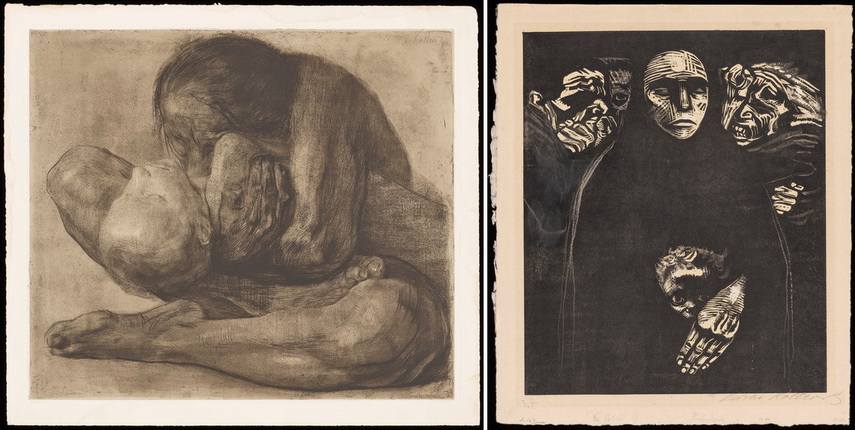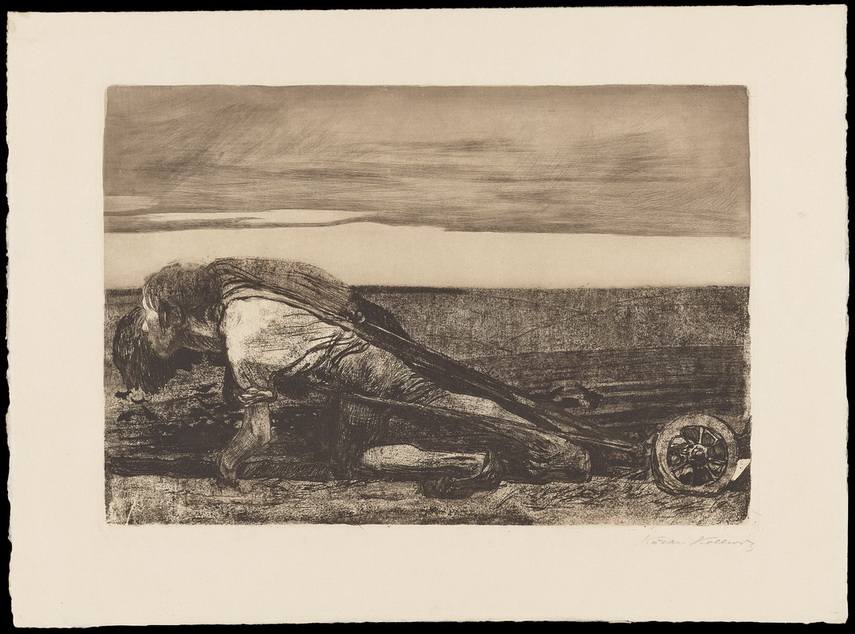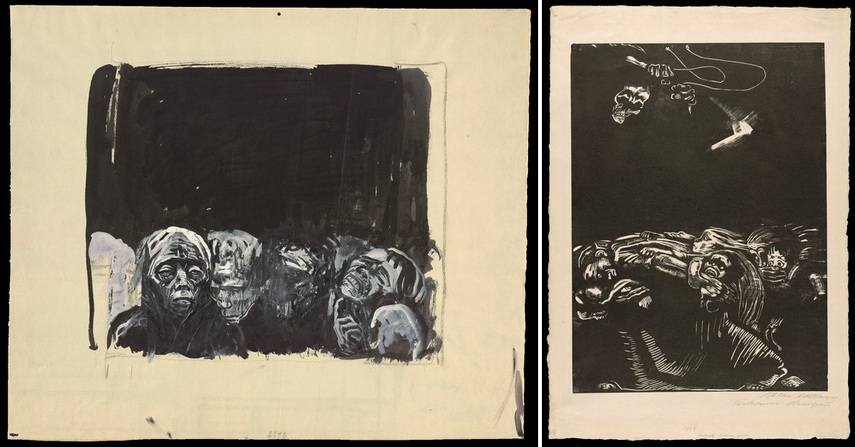Prints, Process, and Politics of Käthe Kollwitz at Getty Center
Expressionism emerged at the beginning of the 20th century as a reaction to Impressionism. Instead of exploring physical reality, the Expressionists were interested in articulating various layers of the human mind, with an emphasis on various emotional states. It was one of the first avant-garde movements that swept Europe and included artists of both genders.
In Germany, where Expressionism was inaugurated by artist groups such as including Der Blaue Reiter and Die Brücke, there was Käthe Kollwitz, a fierce woman affiliated with the movement who contributed to a better understanding of the social circumstances before and after the WW I. Throughout five decades of her fruitful career, she continually depicted social injustice, poverty, and loss, and left an impressive legacy as a pioneering, engaged artist with a precise ideological standpoint.
Currently on display at is an exhibition titled Käthe Kollwitz: Prints, Process, Politics featuring the artist’s rare works from the museum’s holdings extracted from the Dr. Richard A. Simms Collection of Prints and Drawings, aimed to underline both the domains of her engagement and technical virtuosity.

The Political Charged Practice of Käthe Kollwitz
Käthe Kollwitz was raised in a politically active Socialist household which had a tremendous effect on her future practice. In the 1880s she studied painting at schools for women artists in Berlin and Munich, and the interest in printmaking led her to experiment, learning from fellow artists and printers coincided with the blooming of this particular media in late 19th- and early 20th-century Germany. Kollwitz acted independently and perceived printmaking as a perfect medium due to its potential to reach a wider audience.
Gradually the artist developed a form of a social critique believing that the only powerful model for equality could be found in socialism and established through a revolution; her political sympathies were directed towards the Communist party and she was involved with The Arbeitsrat für Kunst (Workers Council for art).
In 1919, she became the first woman elected to the Berlin Akademie der Künste (Academy of Arts), but when in 1933 the Nazi Party seized power, the artist resigned. During World War II her home in Berlin was bombed, and numerous works were destroyed. Two years later amid the end of the war, Kollwitz died at the age of 77 in Moritzburg, near Dresden.

The Exhibition Highlights
The exhibition presents one of her most exemplary print series titled Peasants’ War, finished in 1908, that portrays the historical effects of social injustice and the 16th century revolution that took place in Southern Germany. For six years, Kollwitz worked meticulously on the series with an agenda of making a sort of a historical continuum by connecting this event with the status of political liberties of peasants or working-class people in 20th century Germany.
On display are the etchings honoring the socialist thinker Karl Liebknecht, who was forcefully arrested and killed by right-wing paramilitary forces following the 1919 November Revolution in Berlin. Kollwitz was not a member of the Communist Party, but she was moved by the tragic event and wanted to create a memorial print for Liebknecht. The artist searched for the best technique that would express her sentiment; she even explained that by saying:
The immense impression made by the hundred thousand mourners at his grave inspired me to a work. It was begun and discarded as an etching, I made an attempt to do it anew, and rejected it, as a lithograph. And now finally as a woodcut, it has found its end.

Käthe Kollwitz at Getty Center
The exhibition is curated by Louis Marchesano (the Audrey and William H. Helfand Senior Curator of Prints, Drawings, and Photographs at the Philadelphia Museum of Art), Christina Aube (Exhibitions Coordinator at the Getty Research Institute), and Naoko Takahatake (Curator of Prints and Drawings at the Getty Research Institute), with assistance from Alina Samsonija and Lauren Graber. The co-curator Marchesano underlined:
Kollwitz is known for her powerful social commentary but what people often don’t fully appreciate is that the immediacy and expressive clarity of her images belie the efforts behind the works, which are products of a deliberate and measured artistic process.
The exhibition will be accompanied by an extensive publication published by Getty Press.
Käthe Kollwitz: Prints, Process, Politics will be on view at the Getty Research Institute in Los Angeles until 29 March 2020.
Featured image: Käthe Kollwitz - In Memoriam Karl Liebknecht, Between early August and Christmas 1920. Woodcut, printed in black ink on japan paper. State V of VI. Getty Research Institute, Los Angeles (2016.PR.34). Partial Gift of Dr. Richard A. Simms © 2019 Artists Rights Society (ARS), New York. All images courtesy The Getty Center.
Can We Help?
Have a question or a technical issue? Want to learn more about our services to art dealers? Let us know and you'll hear from us within the next 24 hours.
